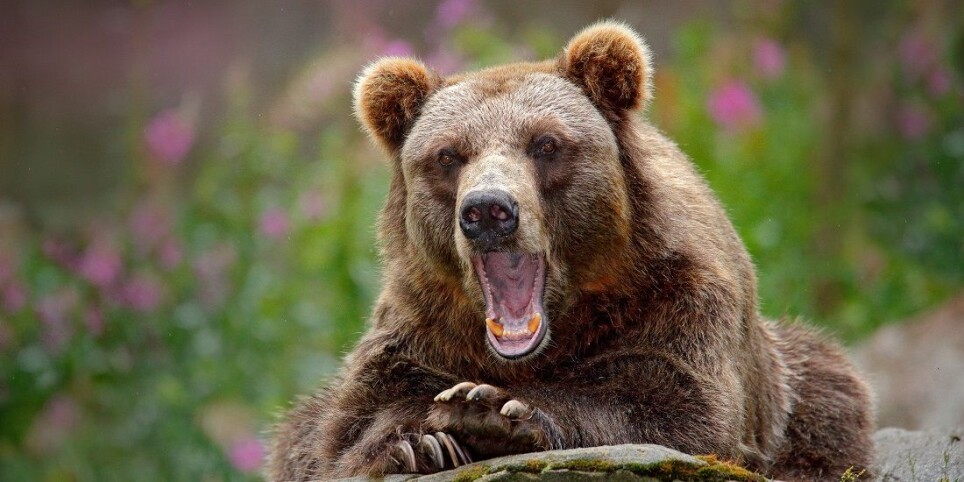THIS ARTICLE/PRESS RELEASE IS PAID FOR AND PRESENTED BY NTNU Norwegian University of Science and Technology - read more

Human antibiotic use affects wild bears
Bacteria in wild bears become more resistant to antibiotics when human antibiotic use is high.
Bears that are killed often end up in museum collections. New technology allows us to see how the genes in these bears have changed over the years — as well as how the bacteria in their bodies has changed, too.
“We specifically examined genes that confer resistance to antibiotics,” says Jaelle Brealey, a postdoc in the Department of Natural History at the NTNU University Museum.
The research group found that human use of antibiotics also affected the bears’ bacteria and their resistance to antibiotics.
The bacteria in the bears developed greater resistance to the medicines during the period when human use of antibiotics resulted in an increase of the drugs in the environment. This resistance was occurring despite the fact that the bears were at home in the wild.
The study results have now been published in the journal Current Biology.

Examined bears from 1842 to 2016
The work was carried out while Brealey was still affiliated with Uppsala University in Sweden, and the results are likewise from Norway’s neighbour to the east. The research group was led by senior lecturer Katerina Guschanski at the University of Edinburgh.
The researchers examined material from 82 bears at the Swedish Museum of Natural History. The oldest bear was killed in 1842, 180 years ago, and thus long before humans began to release antibiotics into the wild. The youngest bear was felled in 2016, once antibiotic use had been regulated for several years.
“This time span allows us to compare how the human use of antibiotics affects the resistance of bears’ bacteria over time,” says Brealey.
Resistance a big problem
The fact that bacteria develop resistance to antibiotics is a big problem, for humans as well as animals. When one type of antibiotic is no longer effective against a bacteria, we have to resort to other types of antibiotics.
If none of these drugs work, scientists are forced to develop new types that can work, and this process is expensive, difficult and time consuming.
The more antibiotics we use, the greater the risk that bacteria will develop resistance to them. Many people and medical doctors try to limit the use of antibiotics as much as possible, to avoid giving bacteria this opportunity. But this retreat from antibiotic use has not always been the case.
Stricter rules in recent years
From the 1940s onward, antibiotics were manufactured on a large scale. From the 1950s to the 1990s, large quantities of antibiotics were used in agriculture and medical treatment in Sweden until their use became strictly regulated about 25 years ago.
Since antibiotics are also found naturally in our environment, distinguishing between the man-made versions and the ones occurring in nature can be tricky. But the researchers found a very clear connection.
“The bears’ genetics reflect the stricter regulations. The genes that confer resistance are not as common in the bacteria of bears that were killed in recent years, after the government limited the use of antibiotics,” says Brealey.
Spread far and wide
The researchers expected to find the greatest resistance in the bacteria of bears that were killed near human habitation. But this did not turn out to be the case.
“Resistance was just as common in the bacteria of bears that were killed far from civilization,” says Guschanski.
That’s not good news.
“This could mean that the large amounts of antibiotics used a few decades ago have spread far and wide in nature,” says Brealey.
The good news, however, is that it pays to cut back on the amount of antibiotics used. Resistance does then decline.
“This study finding is encouraging, because we see that national measures implemented by the authorities actually can work,” says Daniela Kalthoff, curator of the collection at the Swedish Museum of Natural History.
Reference:
Jaelle C. Brealey et.al.: The oral microbiota of wild bears in Sweden reflects the history of antibiotic use by humans. Current Biology, 2021.
See more content from NTNU:
-
Why are pregnant women in Norway so worried?
-
Politics on Facebook: Populist parties choose divisive issues on purpose
-
Social media is connected to cyberbullying – but not how we thought
-
Forskere ved NTNU får nesten 24 millioner av EU for å lage nye strømomformere
-
This helps the youngest children enjoy school more
-
Can we tap the ocean’s power to capture carbon?





































